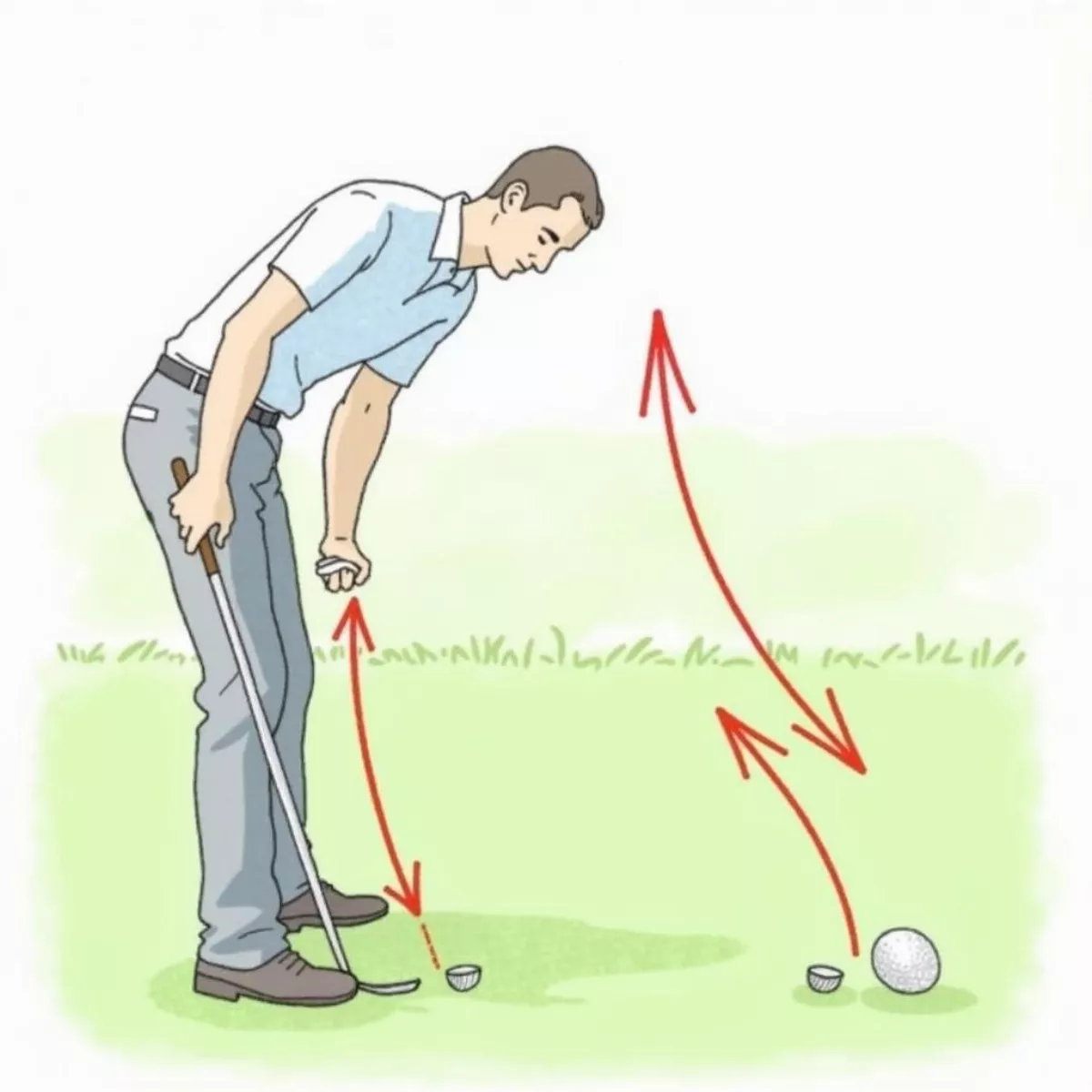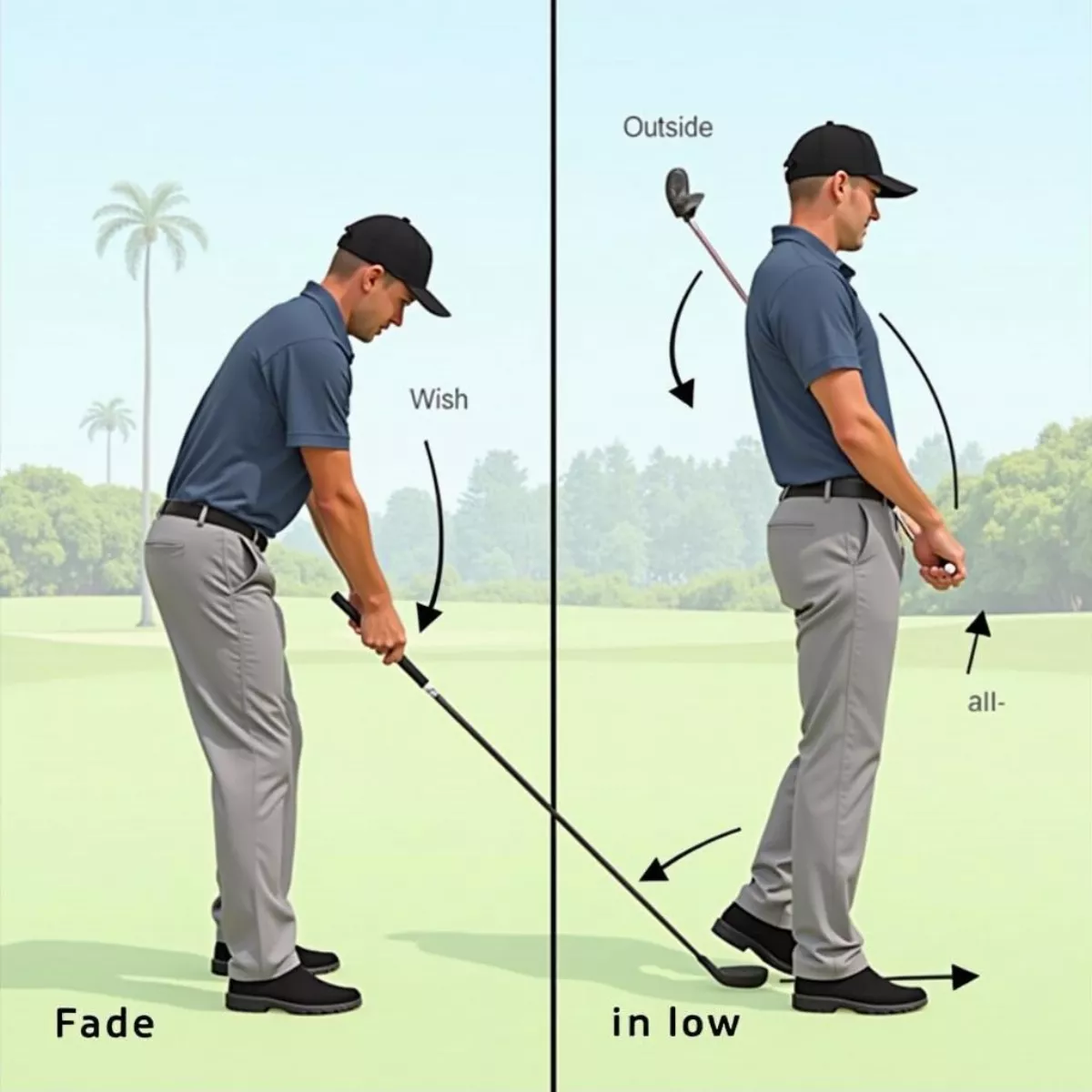Golf is a sport filled with nuances, intricacies, and a unique language. Learning how to manipulate the ball’s flight path can significantly improve your game. Two essential shot types are the fade and the draw. In this article, we’ll dive deep into what these shots are, when to use them, and tips for executing them effectively. So, let’s tee off!
What is a Fade?
A fade is a shot that curves slightly to the right (for a right-handed golfer) and ends up at a slight angle from the original target line. Its trajectory is typically high and consistent.
Characteristics of a Fade
- Ball Flight: An arcing movement to the right.
- Typical Use: Effective for avoiding obstacles, hitting to a tighter pin location, or when you need more control over your shot.
- Wind Effects: A fade can be beneficial when playing into the wind, as the higher trajectory helps resist the wind’s pull.
Tip: A well-executed fade is often seen as a sign of confidence and expertise among golfers.
Pros and Cons of a Fade
| Pros | Cons |
|---|---|
| Easier to control distance and direction | Can result in a slice if overdone |
| Effective for approach shots to the green | Less distance compared to a straight shot in wind |
| Helps avoid trouble on the right side of the fairway | Not always useful on left-to-right doglegs |
What is a Draw?
In contrast, a draw is a shot that curves slightly to the left (for a right-handed golfer). This shot tends to be lower and can generate more distance due to its favorable launch angle.
 Golf Draw Shot Illustration
Golf Draw Shot Illustration
Characteristics of a Draw
- Ball Flight: A gentle movement to the left.
- Typical Use: Ideal for gaining additional distance or maneuvering around obstacles.
- Wind Effects: A draw may be advantageous when playing with the wind, as a lower trajectory allows the wind to carry it farther.
Quote: “A draw can turn a good shot into a great one while traipsing through the fairway.”
Pros and Cons of a Draw
| Pros | Cons |
|---|---|
| Can generate extra distance due to low trajectory | Can lead to hooks if mishandled |
| Effective for navigating around obstacles | Less consistent than a fade for many players |
| Often perceived as more powerful and aggressive | Can be risky if you misjudge the needed curve |
When to Use a Fade or Draw?
Situational Use
- Fades:
- Ideal for narrow fairways where you need to prevent the ball from rolling off the right side.
- Excellent for approach shots to a right-side pin placement.
- It can also help you navigate around trees or obstacles.
- Draws:
- Great for longer par fives, where you want to maximize your distance.
- Preferred when the hole bends left or when avoiding hazards on the right.
- Provides better control with long clubs, especially drivers.
Key Situations
| Shot Type | Best Situations |
|---|---|
| Fade | Approaches to the green with right-side pins |
| Draw | Long par fives and left-bending fairways |
 Golf Course Situations for Fade and Draw Shots
Golf Course Situations for Fade and Draw Shots
How to Execute a Fade
- Grip: Use a neutral grip. Your hands should have a comfortable position on the club.
- Stance: Aim your feet slightly left of the target.
- Alignment: Align your shoulders parallel to your feet.
- Swing Path: Focus on an outside-in swing, aiming to cut across the ball slightly.
- Follow-Through: Maintain a high finish to support the ball’s elevation and right curve.
Fade Drill
To practice your fade:
- Use alignment sticks to train your alignment.
- Hit a series of balls, adjusting the angle of your backswing to understand how it impacts your fade.
How to Execute a Draw
- Grip: A slightly stronger grip with your hands rotated to the right.
- Stance: Your feet should aim slightly right of the target.
- Alignment: Align your shoulders to aim rightward.
- Swing Path: Follow an inside-out swing path to create the draw effect.
- Follow-Through: Keep a low finish, closing the clubface to help promote leftward spin.
Draw Drill
To master your draw:
- Set up alignment sticks pointing towards your target.
- Practice swinging through them, emphasizing the inside-out path.
 Golfer Executing Fade and Draw Shots
Golfer Executing Fade and Draw Shots
The Importance of Practice
Just as with any skill in golf, mastering the fade and draw requires dedicated practice. Spend time on the driving range focusing on both shots. Use drills that emphasize swing paths, alignment, and grip changes. Consider working with a golf instructor to receive personalized feedback.
Key Takeaways
- A fade curves to the right for right-handed golfers, while a draw curves to the left.
- Fades offer greater control, while draws may provide extra distance.
- Execute a fade with an outside-in swing path and a draw with an inside-out swing path.
- Practice is crucial for mastering both shots for various course situations.
FAQ
1. What is the primary difference between a fade and a draw?
The primary difference is the direction of the ball’s curve: a fade curves to the right, while a draw curves to the left (for right-handed golfers).
2. When is it better to use a fade?
You should use a fade when approaching a green with a right-side pin or navigating tight fairways.
3. How can I avoid hitting a hook instead of a draw?
To avoid a hook, ensure you are not closing the clubface too much. Focus on maintaining an inside-out swing path without excessive wrist rotation.
4. What are some common mistakes when trying to hit a fade?
Common mistakes include poor alignment, improper grip, and swinging too aggressively outside-in.
5. Can I learn to hit both shots?
Yes! With practice, golfers can learn to manipulate their swings for both fades and draws. Use drills and professional guidance to improve your skills.
6. Do PGA Tour players often use fades and draws?
Absolutely! Many professionals utilize both shots effectively based on course conditions and specific hole setups.
7. How does wind affect fades and draws?
Fades can be beneficial in windy conditions, as their height resists wind. Draws, when hit appropriately, tend to be lower and can carry better with the wind.
8. Should beginners focus on fades and draws?
Beginners might want to focus first on hitting the ball straight before adding fades and draws to their skillset.
9. Are fades more reliable than draws?
Generally, fades are considered easier to control for many golfers, making them a more reliable option, particularly for approach shots.
10. How can I practice fades and draws alone?
You can practice fades and draws by using alignment tools or visual markers on the range. Focus on the grip, stance, and swing path for each shot type.
With this guide, you’ve now gained a fundamental understanding of fades and draws in golf. Remember, the key to mastering these shots lies in practice and experimentation. Happy swinging!